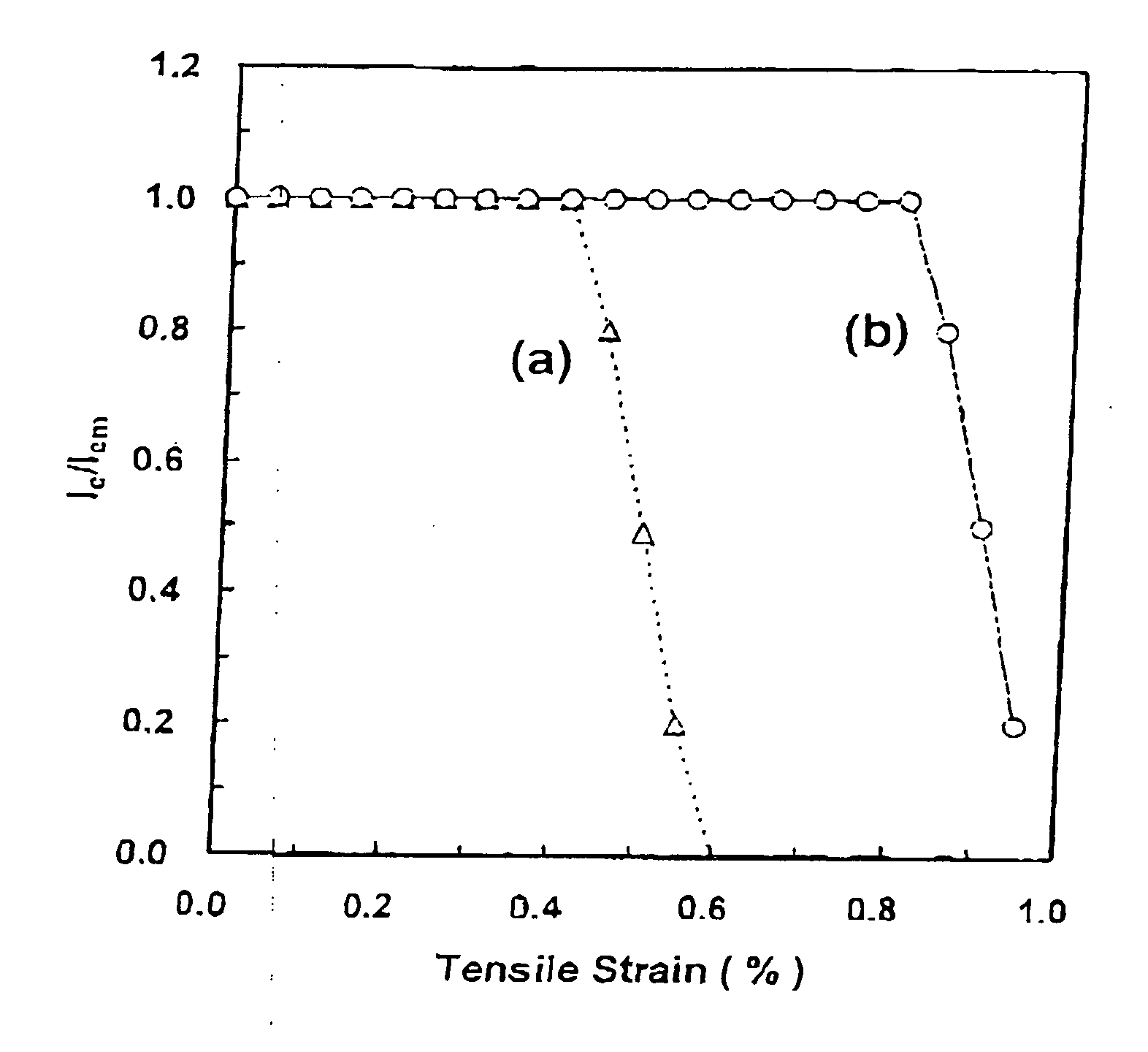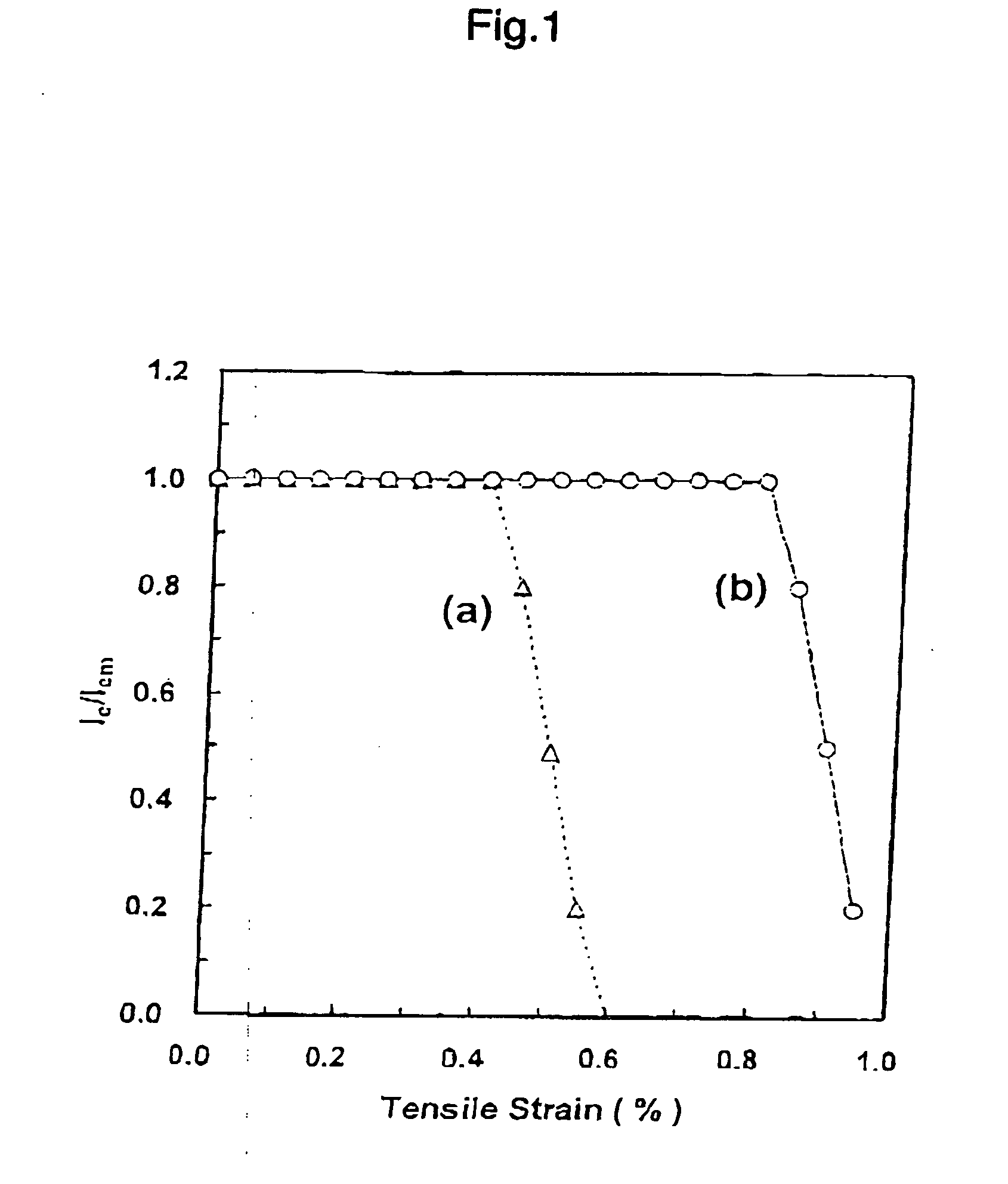Method for producing mgb2 superconductor
a superconductor and superconductor technology, applied in superconductors/hyperconductors, boron/borides, metal borides, etc., can solve the problems of difficult work of copper oxide superconductor, inability to produce mgb2/sub>superconductor, and inability to manufactur
- Summary
- Abstract
- Description
- Claims
- Application Information
AI Technical Summary
Benefits of technology
Problems solved by technology
Method used
Image
Examples
embodiment 1
[0022] An alloy powder of Mg-33 at % Cu was mixed with a B powder at a mol ratio of Mg:B=1:2 and the mixed alloy powder was pressed and then was subjected to heat treatment in a vacuum at 450° C. for 500 hours, at 550° C. for 100 hours, at 600° C. for 4 hours, and at 750° C. for 0.5 hours, which revealed that there were produced superconductors having a Tc of 23K, 38.5 K, 39.1 K, 39.3 K, and 21 K. A clear diffraction pattern of MgB2 was obtained by the X-ray diffraction of this substance. It was recognized from this diffraction pattern that a bulk-shaped MgB2 superconductor was obtained. In this regard, it was recognized by EDAX observation that a Cu-based dilute alloy phase was formed in the sample in addition to the MgB2 phase. Further, even when the ratio of Cu in the alloy with Mg was increased to 50 at %, an excellent superconducting substance was obtained.
[0023] Further, while the above-described heat treatment was performed in the vacuum, it was recognized that the heat trea...
embodiment 2
[0025] An alloy powder of Mg-20 at % Ag was mixed with a B powder at a mol ratio of Mg:B=1:2 and the mixed powder was pressed and then was subjected to heat treatment in a vacuum at 450° C. for 500 hours, at 550° C. for 100 hours, at 600° C. for 10 hours, at 650° C. for 4 hours, and at 750° C. for 1.5 hours, which revealed that there were produced superconductors having a Tc of 22.1K, 34.7 K, 39.2 K, 39.3 K, and 19.9 K. A clear diffraction pattern of MgB2 was obtained by the X-ray diffraction of this substance. In this regard, it was recognized by EDAX observation that a Ag-based dilute alloy phase was formed in the sample in addition to the MgB2 phase. Further, even when the ratio of Ag in the alloy with Mg was increased to 35 at %, an excellent superconducting substance was obtained.
[0026] On the other hand, when an alloy powder of Mg-40 at % Ag was used, a practically satisfactory superconductor was not always obtained.
embodiment 3
[0027] An alloy powder of Mg-15 at % Sn was mixed with a B powder at a mol ratio of Mg:B=1:2 and the mixed alloy powder was pressed and then was subjected to heat treatment in a vacuum at 550° C. for 100 hours, at 600° C. for 10 hours, and at 650° C. for 4 hours, which revealed that there were produced superconductors having a Tc of 31.7 K, 38.8 K, and 39.3 K. A clear diffraction pattern of MgB2 was obtained by the X-ray diffraction of this substance. In this regard, it was recognized by EDAX observation that a Sn-based dilute alloy phase was formed in the sample in addition to the MgB2 phase.
[0028] Further, an alloy powder of Mg-60 at % Sn was mixed with a B powder at a mol ratio of Mg:B=1:2 and the mixed alloy powder was pressed and then was subjected to heat treatment in a vacuum at 550° C. for 100 hours, at 600° C. for 10 hours, and at 650° C. for 4 hours, which revealed that there were produced superconductors having a Tc of 30.3 K, 36.5 K, and 39.2 K. A clear diffraction patt...
PUM
| Property | Measurement | Unit |
|---|---|---|
| Temperature | aaaaa | aaaaa |
| Temperature | aaaaa | aaaaa |
| Temperature | aaaaa | aaaaa |
Abstract
Description
Claims
Application Information
 Login to View More
Login to View More - R&D
- Intellectual Property
- Life Sciences
- Materials
- Tech Scout
- Unparalleled Data Quality
- Higher Quality Content
- 60% Fewer Hallucinations
Browse by: Latest US Patents, China's latest patents, Technical Efficacy Thesaurus, Application Domain, Technology Topic, Popular Technical Reports.
© 2025 PatSnap. All rights reserved.Legal|Privacy policy|Modern Slavery Act Transparency Statement|Sitemap|About US| Contact US: help@patsnap.com


